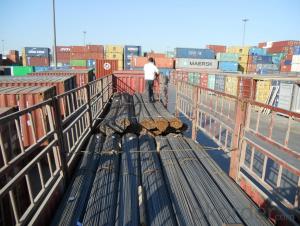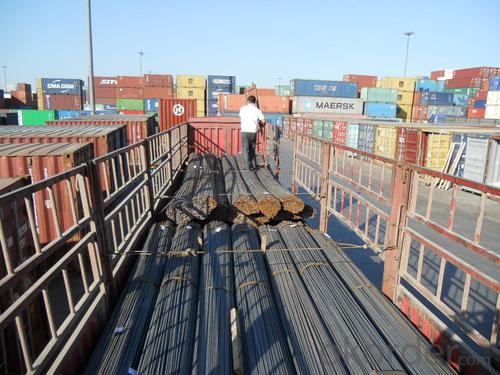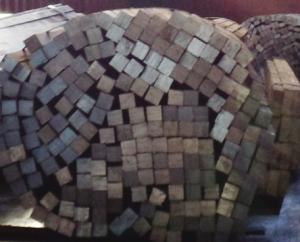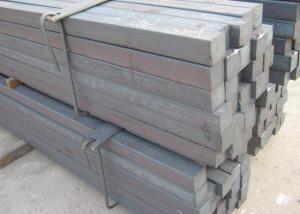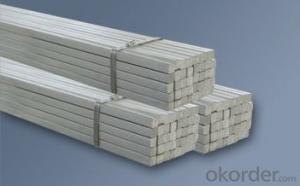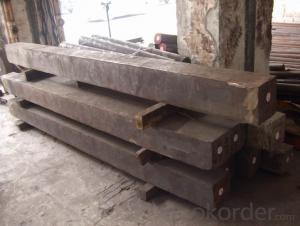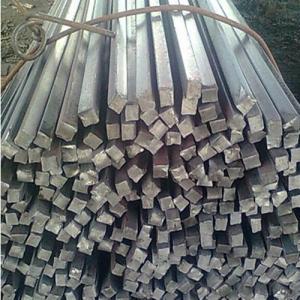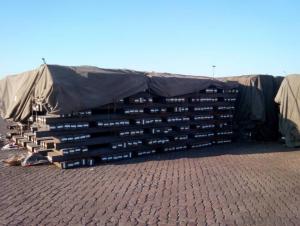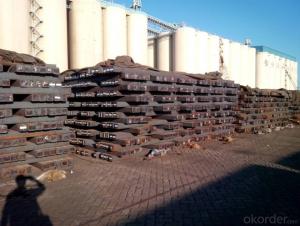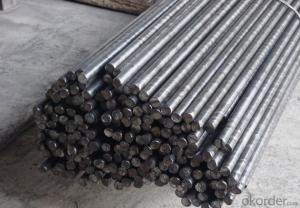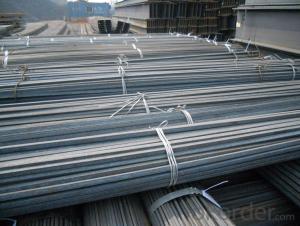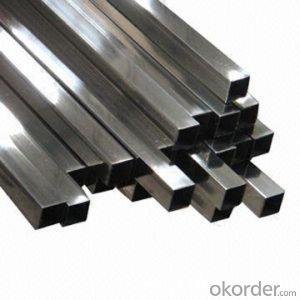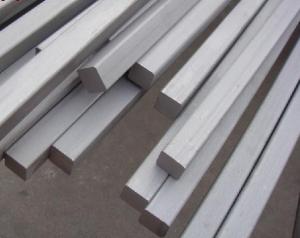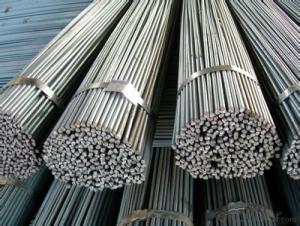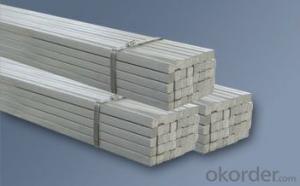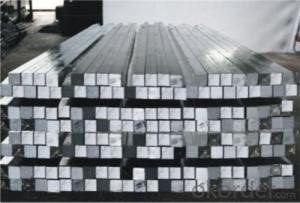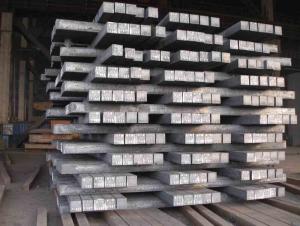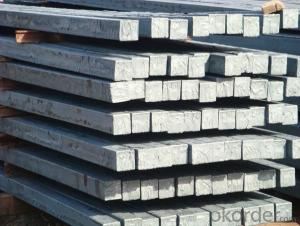Hot Rolled Square Steel Bar Material Q195
- Loading Port:
- Qingdao
- Payment Terms:
- TT or LC
- Min Order Qty:
- 25 m.t.
- Supply Capability:
- 3000 m.t./month
OKorder Service Pledge
OKorder Financial Service
You Might Also Like
Product Description:
OKorder is offering Hot Rolled Square Steel Barat great prices with worldwide shipping. Our supplier is a world-class manufacturer of steel, with our products utilized the world over. OKorder annually supplies products to European, North American and Asian markets. We provide quotations within 24 hours of receiving an inquiry and guarantee competitive prices.
Product Applications:
The Square Steel is normally used as structure steel.
Row material for other structure steel like steel angles, channels, I-beams, H-beams, etc…
Product Advantages:
OKorder's Hot Rolled Square Steel Bar Material Q195 are durable, strong, and resist corrosion.
Main Product Features:
· Premium quality
· Prompt delivery & seaworthy packing (30 days after receiving deposit)
· Corrosion resistance
· Can be recycled and reused
· Mill test certification
· Professional Service
· Competitive pricing
Product Specifications:
Length of a side(mm) | Theoretical weight(kg/m) | Length of a side(mm) | Theoretical weight(kg/m) |
6 | 0.283 | 32 | 8.04 |
7 | 0.385 | 33 | 8.55 |
8 | 0.502 | 34 | 9.07 |
9 | 0.636 | 35 | 9.62 |
10 | 0.785 | 36 | 10.17 |
11 | 0.950 | 38 | 11.24 |
12 | 1.13 | 40 | 12.56 |
13 | 1.33 | 42 | 13.85 |
14 | 1.54 | 45 | 15.90 |
15 | 1.77 | 48 | 18.09 |
16 | 2.01 | 50 | 19.63 |
17 | 2.27 | 53 | 22.05 |
18 | 2.54 | 55 | 23.6 |
19 | 2.82 | 56 | 24.61 |
20 | 3.14 | 58 | 26.4 |
21 | 3.46 | 60 | 28.26 |
22 | 3.80 | 63 | 31.16 |
23 | 4.15 | 65 | 33.17 |
24 | 4.52 | 68 | 36.3 |
25 | 4.91 | 70 | 38.49 |
26 | 5.30 | 75 | 44.16 |
27 | 5.72 | 80 | 50.24 |
28 | 6.15 | 85 | 56.72 |
29 | 6.60 | 90 | 63.59 |
30 | 7.06 | 95 | 70.85 |
31 | 7.54 | 100 | 78.50 |
Notes:
1, The theoretical weights in the list, base on the density of 7.85 g/cm3.
2, The numbers with mean that they are not regulars or we don’t offer them.
-List 2. The allowed tolerance of Square Steel:
Length of a side(mm) | Allowed Tolerance | ||
Group1 | Group2 | Group3 | |
5.5~7 | ±0.20 | ±0.30 | ±0.40 |
7~20 | ±0.25 | ±0.35 | ±0.40 |
20~30 | ±0.30 | ±0.40 | ±0.50 |
30~50 | ±0.40 | ±0.50 | ±0.60 |
60~80 | ±0.60 | ±0.70 | ±0.80 |
80~110 | ±0.90 | ±1.0 | ±1.1 |
110~150 | ±1.2 | ±1.3 | ±1.1 |
150~190 | ―― | ―― | ±2.0 |
190~250 | ―― | ―― | ±2.5 |
Chemical Composition:
Standard | Grade | Element (%) | ||||
GB | Q195 | C | Mn | S | P | Si |
≤0.12 | ≤0.50 | ≤0.04 | ≤0.035 | ≤0.3 | ||
-Method of deoxidation: F, b, Z
Usage/Applications of Square Steel:
-The Square Steel is normally used as structure steel.
-Row material for other structure steel like steel angles, channels, I-beams, H-beams, etc…
Packaging & Delivery of Square Steel:
-Packing Detail: The products can be packed in bundles by steel wires.
-Delivery Detail: 30~45 working days after receive buyer’s T.T. or L/C.
Transportation-1, The products can be delivered by bulk vessel or by container.
2, The maximum quantity of loading of container is 25 tons.
3, The products usually are transported to the nearest port from the production place.
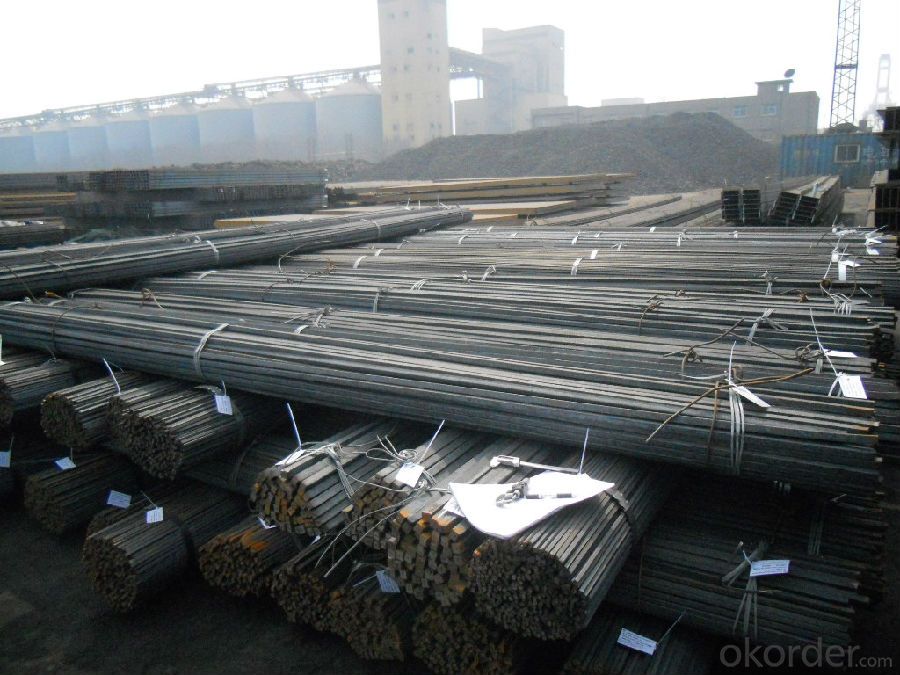
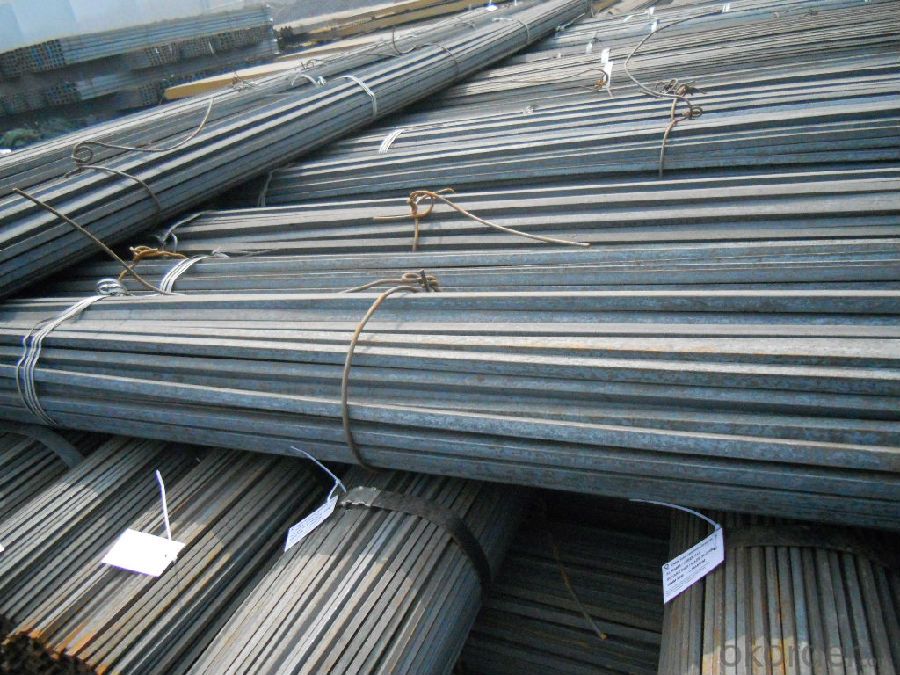
FAQ:
Q1: Why buy Materials & Equipment from OKorder.com?
A1: All products offered byOKorder.com are carefully selected from China's most reliable manufacturing enterprises. Through its ISO certifications, OKorder.com adheres to the highest standards and a commitment to supply chain safety and customer satisfaction.
Q2: How do we guarantee the quality of our products?
A2: We have established an advanced quality management system which conducts strict quality tests at every step, from raw materials to the final product. At the same time, we provide extensive follow-up service assurances as required.
Q3: How soon can we receive the product after purchase?
A3: Within three days of placing an order, we will begin production. The specific shipping date is dependent upon international and government factors, but is typically 7 to 10 workdays.
- Q: The water was poured into the square on how to prevent rust after treatment
- Of course, all can be cloth, face sassafras. After the surface has been cleaned, it is better to put rust on the inside and outside surfaces and store them.Then is the steel material after storage should always check, if there is corrosion, corrosion layer should be removed.Finally, the corrosion of the more serious square steel, rust should not be long-term storage, should be used as soon as possible.
- Q: How do you use a steel square to determine the angle of a hip rafter cut?
- To use a steel square to determine the angle of a hip rafter cut, you will need to follow these steps: 1. Start by placing the steel square on the edge of the hip rafter at the desired location for the cut. 2. Align one arm of the square with the edge of the rafter and make sure it is horizontal. 3. Locate the 12-inch mark on the blade of the square and align it with the top edge of the rafter. 4. Take note of the number on the blade that aligns with the bottom edge of the rafter. This number represents the pitch of the roof. 5. Next, locate the number on the tongue of the square that corresponds to the pitch of the roof. 6. Use a pencil or a marking tool to draw a line along the tongue of the square. 7. This line represents the angle at which you need to make the cut on the hip rafter. 8. Finally, use a saw or any appropriate cutting tool to carefully cut along the marked line. By using a steel square in this manner, you can accurately determine the angle of the hip rafter cut and ensure a precise fit for your roofing project. It is important to note that the specific measurements and markings on the square may vary depending on the type and brand of the square, so it is recommended to consult the instructions or user manual provided with your particular steel square for more accurate guidelines.
- Q: Can a steel square be used for checking the alignment of ceiling tiles?
- Yes, a steel square can be used for checking the alignment of ceiling tiles. The straight and rigid edges of a steel square can help ensure that the tiles are properly aligned and in a straight line.
- Q: How do you use a steel square to measure and mark acute angles?
- To use a steel square to measure and mark acute angles, you need to follow a few simple steps. First, ensure that your steel square is clean and properly calibrated. This will ensure accurate measurements and markings. Next, align one edge of the steel square with the baseline where you want to measure the angle. Make sure the square is securely placed, so it does not move during the process. Then, look for the angle scale on the steel square. This scale usually consists of a series of numbers and lines that represent different angles. Locate the acute angle you want to measure on the angle scale. Acute angles are those that measure less than 90 degrees. Once you have identified the correct angle, place a mark on the baseline at the corresponding line or number on the scale. This mark will serve as the starting point for your angle measurement. Next, draw a line from the mark you made on the baseline, extending away from the square. This line should be parallel to one of the edges of the square. Lastly, measure the desired length of the acute angle from the mark you made on the baseline. You can use a ruler or measuring tape to accurately determine the length. Once you have measured the length, mark the endpoint on the line you drew. By following these steps, you can use a steel square to measure and mark acute angles accurately. Always remember to double-check your measurements and use the correct angle scale on the square to ensure precise results.
- Q: What are the common applications of a steel square in metalworking projects?
- A steel square, also known as a framing square or carpenter's square, is a versatile tool commonly used in metalworking projects. It is primarily used for making accurate measurements, marking straight lines, and checking for squareness and angles. Here are some common applications of a steel square in metalworking projects: 1. Measuring and marking: A steel square is used to measure and mark precise dimensions on metal sheets or bars. It provides accurate measurements for cutting, drilling, or bending metal pieces. 2. Checking for squareness: One of the most crucial applications of a steel square is to check if a metal piece or joint is perfectly square. By aligning the square against the edges or corners, metalworkers can ensure that their projects are square and properly aligned. 3. Determining angles: Steel squares are equipped with angle measurements, such as 45 degrees and 90 degrees. Metalworkers use these angles to determine and mark the required angles for cutting, shaping, or welding metal pieces accurately. 4. Layout and design: Steel squares are useful for layout and design work in metalworking projects. They can be used to draw parallel lines, perpendicular lines, or create right angles for designing metal frames, brackets, or other components. 5. Setting up machinery: Metalworking machinery often requires precise alignment and positioning. A steel square can be used to align machinery components, such as blades, fences, or guides, ensuring they are perpendicular or parallel to the work surface. 6. Welding and fabrication: Steel squares are essential for welding and fabrication projects. They help in aligning and clamping metal pieces together at precise angles to achieve strong and accurate welds. 7. Checking for flatness: Steel squares can be used to check the flatness of metal surfaces. By placing the square against the metal, any gaps or inconsistencies can be easily identified, allowing metalworkers to make necessary adjustments. Overall, a steel square is an indispensable tool in metalworking projects, offering accurate measurements, ensuring squareness, determining angles, and assisting in layout and design work. Its versatility makes it a must-have for metalworkers of all skill levels.
- Q: What are the different ways to read measurements on a steel square?
- There are several ways to read measurements on a steel square. One common method is to use the markings on the blade and tongue of the square, which indicate inches or centimeters. Another way is to align the square with a ruler or tape measure to find the exact measurement. Additionally, some steel squares have built-in scales or protractors that allow for more precise readings.
- Q: Can a steel square be used for masonry projects?
- No, a steel square is not typically used for masonry projects. Masonry projects require specialized tools, such as trowels, levels, and masonry brushes, that are specifically designed to work with materials like bricks, concrete, or stone. While a steel square can be a useful tool for measuring and marking angles in woodworking or construction projects, it is not the ideal tool for masonry tasks. It is important to use the right tools for the job to ensure accuracy and efficiency in any construction or building project.
- Q: What are some common uses of a steel square in welding?
- A steel square is a versatile tool that finds numerous applications in welding. Some common uses of a steel square in welding include: 1. Checking Right Angles: A steel square is primarily used to ensure that the welded joints are at perfect right angles. It helps in maintaining the structural integrity of the welded workpiece. 2. Measuring and Marking: Steel squares have graduated scales along their edges, which allow welders to measure and mark different lengths accurately. This helps in ensuring precise dimensions for the welded components. 3. Layout and Layout Squares: Steel squares are often used in layout work to mark and layout patterns, templates, and cut lines on metal surfaces. Welders can use a steel square to create perpendicular lines, parallel lines, or to scribe circles and arcs. 4. Checking Alignment: Steel squares are handy in checking the alignment of welded components. Whether it is ensuring that two pieces are perfectly aligned before welding or checking the alignment of a welded joint, a steel square can help achieve accurate alignment. 5. Checking Flatness and Squareness: Welders often use steel squares to check the flatness and squareness of welded surfaces. By placing the square against the surface or the weld, they can determine if the welded area is flat or if the edges are square. 6. Welding Table Setup: Steel squares are useful in setting up welding tables. They can be used to align and square the table's framework, ensuring a stable and level surface for welding operations. 7. Fabrication and Assembly: Steel squares are commonly used in the fabrication and assembly of welded structures. They aid in positioning and aligning components during the welding process, resulting in accurate and strong welds. Overall, a steel square is an essential tool in a welder's arsenal, providing accuracy, precision, and reliability in various welding applications.
- Q: Can a steel square be used for checking the accuracy of a miter saw?
- Indeed, the accuracy of a miter saw can be assessed using a steel square. This precision measuring tool, typically crafted from hardened steel and possessing a right angle shape, serves as an effective means of measurement. Its application involves determining if the miter saw's blade is flawlessly cutting at a precise 90-degree angle. To carry out this assessment, one must position the steel square against both the miter saw's fence and the blade itself. By doing so, it becomes possible to determine if the blade aligns impeccably with the edge of the square. In the event of any gap or misalignment, it becomes evident that the miter saw is not cutting with the desired accuracy. Embracing this technique helps to guarantee the precision and accuracy of the miter saw's cuts, making it an invaluable tool for carpenters and woodworkers.
- Q: Can a steel square be used for checking the squareness of bookshelves?
- No, a steel square is not typically used for checking the squareness of bookshelves. Instead, tools like a carpenter's square or a framing square are more commonly used for this purpose.
Send your message to us
Hot Rolled Square Steel Bar Material Q195
- Loading Port:
- Qingdao
- Payment Terms:
- TT or LC
- Min Order Qty:
- 25 m.t.
- Supply Capability:
- 3000 m.t./month
OKorder Service Pledge
OKorder Financial Service
Similar products
Hot products
Hot Searches
Related keywords
